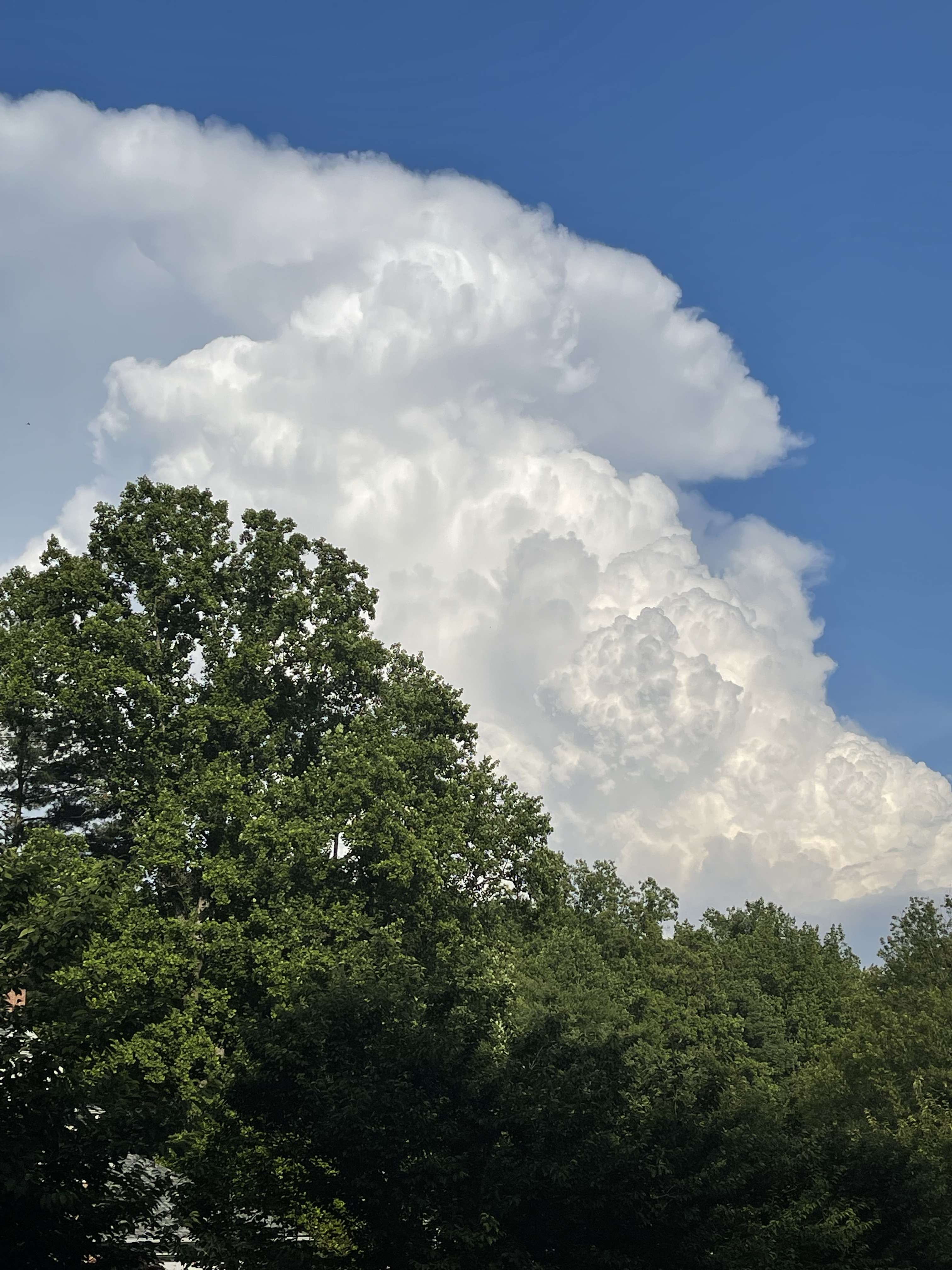-
Posts
44512 -
Joined
-
Last visited
-
Days Won
262
Posts posted by Phil
-
-
When the cold is staring him in the face and is at a short enough range so that it's undeniable he will put it on his maps.
But when it gets into the realm of the long (month+) range he starts to get pretty liberal with the color red.
This x777
-
I have not. And its 100% true.
Not really. Brett Anderson's "interpretations" always run too warm..always.
That and the fact that climate modeling has shown an inherent warm bias since 2009..
-
-
The abstract that you copied in here above, along with the ideas pointed to following it within the main article that you've cited here above, certainly appear to hold the data that you've pointed to above further, as perhaps, dubious.
How so?
The NCDC network and GSN networks follow different homogenization techniques and quality control guidelines.
Regarding NCDC's homogenization protocol? Please elaborate.However, I'm finding nothing (Please correct me here if I'm mistaken.) .. working to support what you're asserted more broadly, more generally.
-
Cite something more specific supporting your assertion here.
All geophysical data bases need some form of quality assurance. Otherwise, erroneous data points may produce faulty analyses. However, simplistic quality control procedures have been known to contribute to erroneous conclusions by removing valid data points that were more extreme than the data set compilers expected. In producing version 2 of the global historical climatology network’s (GHCN’s) temperature data sets, a variety of quality control tests were evaluated and a specialized suite of procedures was developed. Quality control traditionally relies primarily on checks for outliers from both a time series and spatial perspective, the latter accomplished by comparisons with neighbouring stations. This traditional approach was used, and it was determined that there are many data problems that require additional tests to detect. In this paper a suite of quality control tests are justified and documented and applied to this global temperature data base, emphasizing the logic and limitations of each test. © 1998 Royal Meteorological Society.
-
How can Brett Anderson run a climate-change blog, yet posses zero understanding in the realm of climate modeling? The Canadian baselines are only 0.25-0.4 degreesC behind in average, depending on your chosen 30yr block.I would love for this to verify... probably won't but maybe the overall pattern will favor ridging out west this summer. Last summer we were warm without much genuine ridging so maybe we are still due to have a true ridgy summer.
http://www.accuweather.com/en/weather-blogs/anderson/possible-clues-into-the-summer-1/24541198
The problem is the modeling has run way warm in the long range (upwards of 1-1.5C over the northern hemisphere on the most recent Canadian NAEFS!).
-
So Phil, are you saying the HPRCC maps are more reliable than the NOAA ones?
Yes. Look into how NCDC "quality controls" the grid layout based on station distribution. It's laughable, and designed to trim the colder anomalies, while amplifying/expanding the warmer deviations.
-
NOAA's warm bias is getting painfully obvious. Sorry, but my backyard was not "near normal" during February. In fact, it was -5.9F below normal, overall.
These two maps are on the same baseline. If this is the game they can play (and get away with) in the US, imagine what they're doing over the rest of the globe.
I have to wonder if the CFS data on WxBell is actually the legitimate truth..
http://catchmypicture.com/f/7HnVqB/640.jpg
http://catchmypicture.com/f/e2e6PR/640.jpg
Also, the color scheme is deceptive. The light blue is very hard to see..obviously intentional.
I want these dips**ts fed to the dogs, ASAP..
-
Just for the record, it's true that the system is "ahead" of where it was during the Niño transitions of 1997, 2009, and 1982 at this time, and that we're steamrolling towards another Niño..
However, people have a habit of linear projection..and this will prove fatal for those predicting a super niño..
-
-
And just more, btw. ...
Equinox, sorry.
#brainfart
-
Global temps have crashed...coldest (anomaly) since early 2012, on NCDC:
http://www.climate4you.com/images/NCDC%20GlobalMonthlyTempSince1979%20With37monthRunningAverage.gif
Steady on RSS, colder than the start of 2013:
http://climate4you.com/images/MSU%20RSS%20GlobalMonthlyTempSince1979%20With37monthRunningAverage.gif
-
I'm just afraid we squandered the best chance we are going to have for a while. Tremendously frustrating.
Next winter should surprise everyone, coast to coast. I'll elaborate later..but it looks like things are gonna get exciting over the next 5 years..
Still doing my research though..just a disclaimer.
-
this is beowed ridiculous now.leave it to this winter phil to pick the prime time for snow to stick in mid late march at night lol.
Winter just refuses to give up..we're almost at the solstice..lol..
http://catchmypicture.com/f/9djSja/800.jpg
-
Ugh, long range GEFS.. If this continues through Spring I'm gonna pop my lid
http://www.americanwx.com/bb/uploads/monthly_03_2014/post-455-0-02281600-1395010283.gif
-
-
The Hadley Cells consist basically of the subtropical high pressure systems that reside around 30N as a result of the subsidence from the convection in the ITCZ. Is that correct? When the cells extend poleward, I am assuming that these subtropical highs are larger and much further north than normal, creating a pattern of dryness further north normally associated with that of the "horse latitudes" leading to the megadrought conditions in the SW.
Bingo. Larger, weaker, and at a more poleward latitude.
Did you say above that the Hadley Cells would likely shrink and retract southward, allowing more storminess for CA, if we go into a grand solar minimum? I just wanted to make sure I read your post correctly.
Yes, they will, with rapid changes beginning from 2016-2018..
-
Well if we're going into a cool period, as you believe, he won't have to worry for much longer, right?
Yep. Essentially, the poleward migration of the Hadley cells is the culprit for the SW US drought.
-
I feel I need to make a public apology to Richard. I'm going through a lot right now, and I let my anger get in the way of common sense.
I'll be "suspending" myself from posting in this thread for the next week while I handle the problems I'm facing.
-
I wonder if it is these conflicting signals that may be at least in part contributing to the bad drought conditions in CA by any chance. It almost sounds to me as if things are offsetting each other in some sort of fashion and as a result we are getting nothing but repeats of warm dry weather here in Socal.
If you think this is bad, research the two recent mega-droughts that affected the SW US. The last one occurred about 1000 years ago, with an even bigger one 2000yrs ago. These blow away anything witnessed in the modern era.
Notice, both of these droughts coincide with warm periods, hence poleward oriented Hadley Cells.
-
Ewww. 1957-58 was one of the biggest loser winters of all time here. Pretty remarkable since it was in the other wise amazing 1950s.
It is interesting, however, that the atmosphere continues to be way out of synch with what the ocean wants to do in the tropical Pacific. The entire time we have been in this Ninoesque atmosphere ENSO SSTs have been cold, and now warm water is about to surface and the atmosphere will go Ninaish.
Things could change. The atmosphere/external forcings actually govern the oceans, though they both (oceans/atmosphere) work within the boundaries of one another, as a fully coupled system. Tropical SSTs are one of many factors that affect tropical convection/the Hadley Cells.
As the latest peer reviewed literature has found, ENSO can be fully explained via solar, geomagnetic, QBO, and SAO forcings, which seem to govern the tropical circulations/MJO period frequency, hence ENSO.
That method has worked very well for me.
-
It appears we might have one more chance to do some real damage to the potentially developing El Nino. The subsurface Kelvin wave is about to surface at the same time we are entering a very Nina-ish MJO wave (octants 2 through 4). The graphic I'm posing is from what has been proven to be one of the best MJO forecast models. One other thing we have going for us is the SOI* (different than the SOI) which is progged to be rather high for the next two weeks as strong surface high pressure off the West Coast of South America takes hold. I think it will become apparent within the next few weeks just how serious of trouble we may be in as far as the possible El Nino is concerned.
We're almost certainly in for a Niño, but it'll end up as either weak or moderate. Top analog for 2014-15 is 1957-58, despite that one being a strong Niño.
ECMWF tries to push the Walker cell a bit farther east, hence: http://www.cpc.ncep.noaa.gov/products/precip/CWlink/MJO/CLIVAR/ecmf.shtml
-
.. You're dreamin'. (Note the absence of an emoticon.)
— Don't mis-represent what I've said, in the future.
.. Feel free to quote me whenever you like.
Sigh... I digress. If western were still open, this would be over quickly.
-
"Wrong". ... "Not".
(Where, when. ?)
... I've been pointing to the idea of a stronger period of ENSO activity looked at more generally, being likely between 20..15-17, for 4 or 5 years at this point. And with this idea, had in fact posted that likelihood at "Western" when it had still been up and running. ... More than this, and toward my having worked to maintain this idea more here within this new setting, I've in fact brought it up within a post tacked to the main ENSO thread—currently located—over in the "Long Range Discussion" sub-forum.
(Perhaps you've see it: you started the thread. It [the thread] was "Moved" to that sub-forum, from this one, with whomever having moved it, not apparently having agreed with your thinking that all discussion here and with this new reorganization and setup should be more "homogenized".)
This general conjecture of mine brought up—and clarified, .. More essentially, .. and with my intent with this post certainly not, being to open up an "ENSO" discussion with you, here in the middle of this thread, ... (cont., in the "2014 ENSO" thread: again, located over within the main "Long Range Discussion" sub-forum, broad sub-forums listing.)
Seriously? If western were still up I'm pretty sure I could dig up hundreds of posts claiming a Niño for 2012-13. I spent so many hours debating that with you it drove me insane.
Again, no disrespect intended, but I know I'm not crazy.

-
Its not a competition.
And I wasn't talking about this year.
Richard though is by far the most accurate on here the last few years.
No offense, but he was predicting a moderate El Niño for 2012-13, onward.
Unless you're referring to west-coast specific weather?
-
I think it has something to due with the weakening heliospheric magnetic field. In the past, increased sitings of noctilucent clouds preceded significant global cooling episodes, so there is a relationship, IMO.



Will A Major El Nino Spell Doom For Next Winter In The NW?
in Climate, World Weather, and Earth Sciences
Posted
The hype is getting out of control . Andrew Freedman is a stupid alarmist crank at heart, without a shred of knowledge in the realm of physics and systems science.